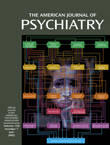Molecular Neuropharmacology: A Foundation for Clinical Neuroscience
This book is indeed a worthy successor to The Molecular Foundations of Psychiatry(1). Substantially enlarged, with 11 contributing authors, this work would be an ideal introductory neuroscience text for medical students, residents, and graduate trainees in related disciplines. The emphasis is on neuropharmacology, but the authors note that true mastery of the subject requires an appreciation of the “entire sequence of events that commences with the binding of a drug to an initial molecular target” (p. xv). Perhaps most importantly, Molecular Neuropharmacology also serves as a clarion call alerting clinicians to a new era in therapeutic drug development.
The book is organized “layer by layer,” allowing the reader to relate neuropharmacology to neural systems and ultimately to clinical neuroscience. Part 1, Fundamentals of Neuropharmacology, provides a brief discussion of general principles of neuropharmacology and a detailed presentation of nervous system function. Part 2, Neural Substrates of Drug Action, reviews the major neurotransmitter systems in terms of their synthesis, degradation, and transporter proteins, which are the initial targets for most existing psychotropic drugs. This section also emphasizes neurotropic factors, increasingly recognized as important influences in the CNS, and their potential as exploitable therapeutic targets.
Part 3, Neuropharmacology of Specific Neural Functions and Related Disorders, incorporates the first two sections to build a systems-level description of the major domains of nervous system function, including the autonomic nervous system; neuroendocrine function; movement; emotion and mood; reinforcement and addiction; higher cognitive function and psychosis; attention and sleep; pain; memory and dementia; and stroke and seizure. Each specific domain is discussed in terms of its neural mechanisms, diseases that affect the domain, and the effects of different drugs on normal function as well as specific disorders. Finally, relevant clinical information in each section is related to molecular genetics, intracellular mechanisms, and the effect of drugs on disorders such as Parkinson’s disease, Huntington’s disease, depression, schizophrenia, degenerative dementia, stroke, and epilepsy. Perhaps the most exciting aspect of this book is the insight provided for the identification of molecular targets that will drive development of novel therapeutic approaches in the future.
Caveat emptor! This text will require a great deal of work from any reader. The information provided is complex, comprehensive, and not easily digested in a single reading. To help, the authors provide introductory key concepts for each chapter, “boxed” information that serves as useful annotations to the text, and well-designed illustrations. I believe the ideal way to comprehend the wealth of information provided is incrementally (e.g., chapter by chapter, section by section) and with discussion in a small group. This approach would allow for the best appreciation and mastery of the material. If that is not possible (which unfortunately is often the case), this work will still reward less intense scrutiny. For example, it could serve as an excellent reference, providing exceptional background for topics of interest to the reader.
Increasingly, insights provided by the neurosciences will guide the development of psychotherapeutic agents. Molecular Neuropharmacology simultaneously awakens the reader to the possibility of more effective therapies and clarifies how complex the journey to this goal truly is.
1. Hyman SE, Nestler EJ: The Molecular Foundations of Psychiatry. Washington, DC, American Psychiatric Press, 1993Google Scholar



